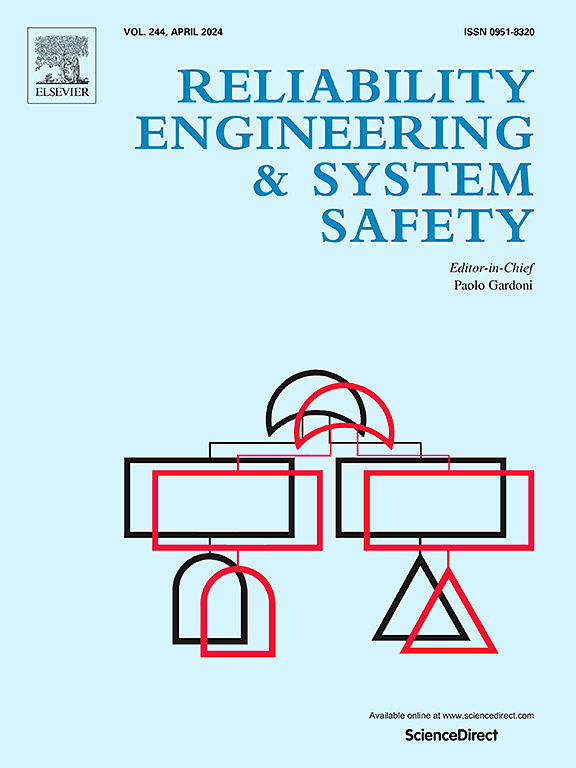An optimal self-healing policy with discrete resources
IF 9.4
1区 工程技术
Q1 ENGINEERING, INDUSTRIAL
引用次数: 0
Abstract
Intelligent systems capable of detecting and repairing damage autonomously hold significant promise across various domains, such as space exploration, autonomous vehicles, and robotics. Integrating self-healing mechanisms is pivotal in enhancing these systems’ durability, reliability, and efficiency. This paper introduces a novel self-healing policy with discrete self-healing resources. Self-inspections at equidistant time epochs reveal the deterioration of the system. Various actions, including doing nothing, self-healing, and stopping, can be selected after inspection. A self-healing action reduces deterioration to a random lower level, with the degree of reduction depending on the amount of healing resources used. Therefore, it is crucial to determine the optimal number of healing resources to allocate during self-healing. The goal is to identify the policy that minimizes the expected average cost. This optimization problem is formulated within the semi-Markov decision process framework. The structural properties of the optimal policy are examined. A policy iteration algorithm is developed based on a discretization approach. A numerical example is used to show how to apply the proposed approach, and the obtained policy provides valuable insights to support the operation of intelligent systems.
具有离散资源的最优自愈策略
能够自主检测和修复损伤的智能系统在太空探索、自动驾驶汽车和机器人等各个领域都有着重要的应用前景。集成自我修复机制对于提高这些系统的耐久性、可靠性和效率至关重要。提出了一种具有离散自愈资源的自愈策略。等距时间的自检揭示了系统的劣化。检查后可选择不做、自愈、停止等多种动作。一个自愈行动可以将恶化程度随机降低到一个较低的水平,降低的程度取决于所使用的治疗资源的数量。因此,确定在自我修复过程中分配的最佳修复资源数量是至关重要的。目标是确定最小化预期平均成本的策略。该优化问题是在半马尔可夫决策过程框架内提出的。研究了最优策略的结构性质。提出了一种基于离散化方法的策略迭代算法。通过一个数值例子说明了如何应用所提出的方法,所得到的策略为支持智能系统的运行提供了有价值的见解。
本文章由计算机程序翻译,如有差异,请以英文原文为准。
求助全文
约1分钟内获得全文
求助全文
来源期刊

Reliability Engineering & System Safety
管理科学-工程:工业
CiteScore
15.20
自引率
39.50%
发文量
621
审稿时长
67 days
期刊介绍:
Elsevier publishes Reliability Engineering & System Safety in association with the European Safety and Reliability Association and the Safety Engineering and Risk Analysis Division. The international journal is devoted to developing and applying methods to enhance the safety and reliability of complex technological systems, like nuclear power plants, chemical plants, hazardous waste facilities, space systems, offshore and maritime systems, transportation systems, constructed infrastructure, and manufacturing plants. The journal normally publishes only articles that involve the analysis of substantive problems related to the reliability of complex systems or present techniques and/or theoretical results that have a discernable relationship to the solution of such problems. An important aim is to balance academic material and practical applications.
 求助内容:
求助内容: 应助结果提醒方式:
应助结果提醒方式:


